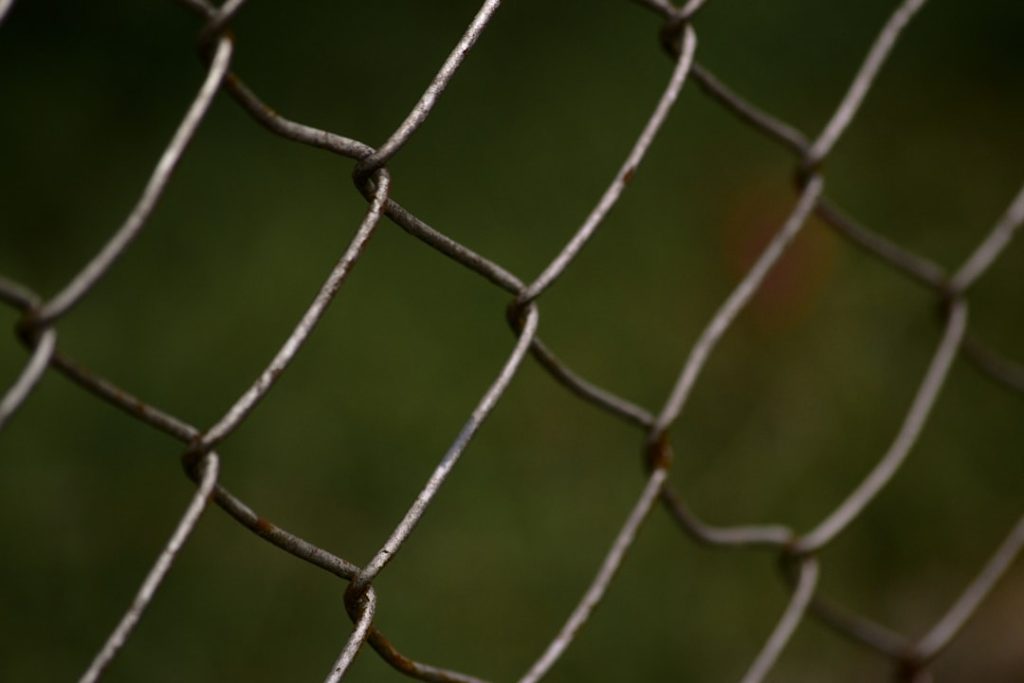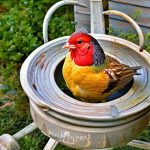Chickens exhibit natural curiosity and are attracted to tomato plants for several reasons. The bright red color of ripe tomatoes appeals to their visual preferences, as chickens are drawn to vibrant hues. The movement of tomato plant leaves and branches can also capture their attention, prompting investigation.
As omnivores, chickens may be enticed by the scent of tomatoes, constantly seeking new food sources. Their pecking behavior can also stem from boredom or their innate foraging instinct. Tomato plants can serve as a moisture source for chickens, particularly in hot and dry climates.
The water that accumulates on leaves and fruits after watering may attract chickens, leading them to peck at the plants in an attempt to access this moisture. This behavior can inadvertently cause damage to the plants. While chickens are not intentionally destructive, their natural behaviors and instincts can result in harm to tomato plants.
Understanding these underlying motivations is crucial for developing effective strategies to protect crops from chicken-related damage. By recognizing the factors that attract chickens to tomato plants, gardeners and farmers can implement appropriate measures to safeguard their plants while accommodating the natural behaviors of their poultry.
Table of Contents
- 0.1 Creating Physical Barriers
- 0.2 Securing the Barriers
- 0.3 Using Netting and Row Covers
- 0.4 Maintenance and Effectiveness
- 0.5 Key Takeaways
- 1 Training chickens: Can chickens be trained to stay away from tomato plants?
- 2 FAQs
- 2.1 What are some natural ways to keep chickens away from tomato plants?
- 2.2 Are there any commercial products available to keep chickens away from tomato plants?
- 2.3 Why do chickens like to peck at tomato plants?
- 2.4 Can I train my chickens to stay away from my tomato plants?
- 2.5 Are there any plants that I can companion plant with tomatoes to deter chickens?
Creating Physical Barriers
One effective way to protect tomato plants from chickens is by creating physical barriers that prevent the chickens from accessing the plants. This can be achieved by installing fencing around the perimeter of the tomato garden or using individual plant cages to enclose each tomato plant. When choosing fencing or cages, it is important to select materials that are sturdy and tall enough to prevent chickens from jumping over or reaching through to access the plants.
Securing the Barriers
Additionally, it is important to secure the bottom of the fencing or cages to prevent chickens from digging underneath and gaining access to the plants. Another option for creating physical barriers is to use netting or row covers to protect the tomato plants from chickens. Netting can be draped over the plants and secured at the base to prevent chickens from pecking at the leaves and fruits.
Using Netting and Row Covers
Row covers can also be used to create a physical barrier between the chickens and the tomato plants, providing an extra layer of protection against potential damage. When using netting or row covers, it is important to ensure that they are securely fastened and do not pose a risk of entanglement for the chickens.
Maintenance and Effectiveness
In addition to creating physical barriers, it is important to regularly inspect and maintain these barriers to ensure that they remain effective in protecting the tomato plants from chickens. By implementing physical barriers, we can effectively deter chickens from accessing and potentially damaging our tomato plants.
In addition to physical barriers, natural deterrents can also be used to keep chickens away from tomato plants. One effective natural deterrent is the use of strong-smelling herbs and plants that are unappealing to chickens. For example, planting garlic, onions, or marigolds around the perimeter of the tomato garden can help deter chickens from approaching the plants.
These strong-smelling plants emit odors that are unpleasant to chickens, making them less likely to venture near the tomato plants. Another natural deterrent that can be used is the application of spicy or bitter substances on or around the tomato plants. For example, sprinkling cayenne pepper or hot sauce around the base of the plants can deter chickens from pecking at them.
Similarly, spraying a mixture of water and vinegar on the leaves and fruits of the tomato plants can make them less appealing to chickens. It is important to reapply these natural deterrents regularly, especially after rainfall or watering, to ensure their continued effectiveness in keeping chickens away from the tomato plants. Furthermore, introducing natural predators of chickens into the environment can also help deter them from approaching the tomato plants.
For example, allowing predatory birds such as hawks or owls to frequent the area can create a sense of danger for chickens, making them less likely to venture near the tomato plants. By using natural deterrents, we can effectively discourage chickens from approaching and potentially damaging our precious tomato plants.
Key Takeaways
- Chickens are attracted to tomato plants because they enjoy pecking at the leaves and fruits, and they may also be drawn to the shade and shelter provided by the plants.
- Physical barriers such as fences, cages, or netting can be used to protect tomato plants from chickens and prevent them from accessing the plants.
- Natural deterrents like planting strong-smelling herbs or using spicy sprays can help keep chickens away from tomato plants.
- Chickens can be trained to stay away from tomato plants through positive reinforcement, such as providing them with alternative sources of food and creating a designated foraging area.
- Scare tactics like using noise-making devices or visual deterrents such as scarecrows can be effective in deterring chickens from approaching tomato plants.
- Seeking professional help from poultry experts or agricultural extension services can provide effective and tailored solutions for protecting tomato plants from chickens.
- Maintaining a harmonious relationship between chickens and tomato plants involves implementing a combination of physical barriers, natural deterrents, training, scare tactics, and seeking professional advice to ensure the well-being of both the plants and the chickens.
Training chickens: Can chickens be trained to stay away from tomato plants?
While it may seem challenging, it is possible to train chickens to stay away from tomato plants through consistent and patient training methods. One effective training method is using positive reinforcement to reward chickens for staying away from the tomato plants. This can be achieved by offering treats or rewards when the chickens exhibit desired behaviors, such as staying within designated areas away from the tomato garden.
By consistently rewarding these behaviors, chickens can learn to associate staying away from the tomato plants with positive experiences, making them more likely to continue this behavior in the future. Another training method is using deterrents such as loud noises or sudden movements to discourage chickens from approaching the tomato plants. For example, clapping hands or using a whistle when chickens approach the garden can startle them and create a negative association with venturing near the tomato plants.
Over time, chickens can learn to avoid the tomato garden altogether in order to avoid these unpleasant experiences. It is important to note that training chickens requires patience, consistency, and positive reinforcement. By using these training methods, we can effectively teach chickens to stay away from tomato plants and minimize potential damage to our crops.
Scare tactics can be an effective way to deter chickens from approaching tomato plants and prevent potential damage. One common scare tactic is using visual deterrents such as scarecrows or reflective objects near the tomato garden. Scarecrows can be placed strategically around the perimeter of the garden to create a sense of danger for chickens, making them less likely to approach the area.
Similarly, hanging reflective objects such as CDs or aluminum foil strips can create flashes of light that startle and deter chickens from venturing near the tomato plants. Another scare tactic that can be used is employing motion-activated devices that emit sudden sounds or movements when triggered by approaching chickens. These devices can startle chickens and create a negative association with approaching the tomato garden, making them less likely to return in the future.
Additionally, employing motion-activated sprinkler systems near the tomato garden can startle and deter chickens with sudden bursts of water when they approach, effectively keeping them away from the plants. It is important to regularly rotate and vary scare tactics to prevent chickens from becoming accustomed to them over time. By utilizing scare tactics, we can effectively deter chickens from approaching our precious tomato plants and minimize potential damage.
Expert Guidance on Crop Protection
Agricultural extension agents can offer valuable guidance on implementing effective management practices to prevent poultry damage to crops. This includes recommendations for physical barriers, natural deterrents, and scare tactics to keep chickens away from tomato plants. They can also provide advice on plant selection and garden layout to minimize the attractiveness of tomato plants to chickens.
Insights into Chicken Behavior
Poultry specialists can provide valuable insights into chicken behavior, enabling them to recommend effective training methods and behavioral modification techniques to deter chickens from approaching tomato plants. They can also offer guidance on managing chicken behavior through environmental enrichment and providing alternative sources of food and water, reducing their interest in tomato plants.
Maintaining a Harmonious Relationship
By consulting with experts, we can gain valuable knowledge and insights into effective solutions for protecting tomato plants from chickens. This expertise enables us to maintain a harmonious relationship between poultry and crops, ensuring a successful and thriving garden.
In conclusion, understanding the reasons behind why chickens go after tomato plants is crucial in addressing this issue effectively. By creating physical barriers, using natural deterrents, training chickens, utilizing scare tactics, and seeking professional help when needed, we can protect our precious tomato plants from potential damage while maintaining a harmonious relationship between poultry and crops. It is important to approach this issue with patience and understanding of chicken behavior, as well as implementing proactive measures to prevent potential damage.
By implementing these strategies, we can create a balanced environment where both poultry and crops can thrive without conflict. With careful planning and consistent efforts, we can successfully protect our tomato plants from chickens while promoting a harmonious coexistence between poultry and crops in our gardens.
If you’re looking for more tips on keeping chickens away from your tomato plants, check out this article on where to put a chicken coop. It offers valuable insights on how to strategically place your chicken coop to minimize their access to your garden.
FAQs

What are some natural ways to keep chickens away from tomato plants?
Some natural ways to keep chickens away from tomato plants include using physical barriers such as fences or netting, planting deterrent plants like marigolds or garlic around the tomatoes, and using natural repellents like citrus peels or vinegar.
Are there any commercial products available to keep chickens away from tomato plants?
Yes, there are commercial products available such as chicken repellent sprays or granules that can be used to deter chickens from getting near tomato plants.
Why do chickens like to peck at tomato plants?
Chickens are naturally curious and may peck at tomato plants out of boredom or to explore new surroundings. They may also be attracted to the bright colors of the tomatoes.
Can I train my chickens to stay away from my tomato plants?
Yes, you can train chickens to stay away from tomato plants by using positive reinforcement techniques such as rewarding them with treats when they stay away from the plants, and gently discouraging them from pecking at the tomatoes.
Are there any plants that I can companion plant with tomatoes to deter chickens?
Yes, plants like marigolds, garlic, and onions can be companion planted with tomatoes to help deter chickens. These plants have strong scents that chickens may find unpleasant.
Meet Walter, the feathered-friend fanatic of Florida! Nestled in the sunshine state, Walter struts through life with his feathered companions, clucking his way to happiness. With a coop that’s fancier than a five-star hotel, he’s the Don Juan of the chicken world. When he’s not teaching his hens to do the cha-cha, you’ll find him in a heated debate with his prized rooster, Sir Clucks-a-Lot. Walter’s poultry passion is no yolk; he’s the sunny-side-up guy you never knew you needed in your flock of friends!








